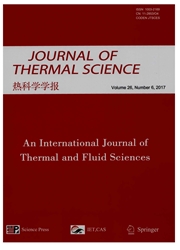

 中文摘要:
中文摘要:
热产生模特儿和三维的计算液体动力学当模特儿因为锂离子房间被建立,边界条件定义。为了关于高力量的锂的行为提供更好的卓见,在现实主义的分泌物条件,房间的温度差别和有一个纯 air-cooling 模式的一个活跃热管理系统下面的离子房间与影响讨论的温度地的不平坦的因素被分析并且预言。结果为所有分泌物率在房间的温度上升显示出冷却流动率的重要效果。平均表面温度以使控制包的温度更容易的更低的分泌物率是相对一致的。房间温度被期望近分泌物的结束显著地升起,他们以更高的分泌物率显示出不一致。活跃冷却的足够的空气流动率为实际包装以高分泌物率和高周围的温度被要求热管理系统。
 英文摘要:
英文摘要:
The heat generation model and three-dimensional computational fluid dynamics model for lithium ion cells were established with boundary conditions defined. In order to provide a better insight about the behaviors of high-power lithium ion cells under realistic discharge conditions, the temperature difference of the cells and an active thermal management system with a pure air-cooling mode were analyzed and predicted with the factors af- fecting the unevenness of temperature field discussed, The results show a significant effect of the cooling flow rate on the temperature rise of the cells for all discharge rates. Average surface temperatures are relatively uniform at lower discharge rate that makes it easier to control the temperature of the pack. Cell temperatures are expected to rise significantly toward the end of discharge and they show non-uniformity at higher discharge rates. Adequate air flow rate of active cooling is required at high discharge rate and high ambient temperature for practical pack thermal management system.
 同期刊论文项目
同期刊论文项目
 同项目期刊论文
同项目期刊论文
 期刊信息
期刊信息
